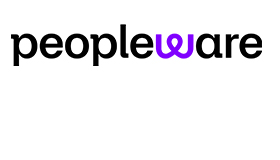Chris Dealy at injixo looks at the difference between occupancy, utilization, and productivity.
These familiar metrics are critical to managing every contact centre. And it’s vital to take them into account properly within the workforce management process.
The problem is, they all sound very similar and are sometimes confused with one another. Let’s examine them one by one.
Occupancy
Occupancy is the percentage of an agent’s logged-in time that is spent on contact-related activity. ‘Contact-related activity’ covers talk time, hold, and after-call work (ACW). So, if your contact centre has occupancy of 75%, it means that its agents are spending three-quarters of their logged-in time doing ‘contact-related activities’.
According to COPC, it is calculated using this formula: (total talk time + total hold time + total after-call work i.e. ACW) / hours logged in (and ready to take contacts).
Good practice is not to exceed 90% occupancy. Call Centre Helper estimates that the industry average is 83%.
Target occupancy should be factored into the staffing calculation. E.g. if you are aiming for 83% occupancy, you should inflate your staffing requirement by 1/(0.83)-1 = 20%.
Utilization
Utilization is deceptively similar to occupancy but has some subtle but important differences. It is the percentage of paid time that is spent on any productive activity.
It can be expressed as (total talk time + total hold time + total ACW + time spent on other productive activities) / paid hours.
Productivity
Productivity is the percentage of an agent’s paid time that is productive time. It is the inverse of shrinkage.
Shrinkage is the percentage of paid time that employees are not available to handle contacts. This includes unproductive at-work activities such as breaks, meetings, training, and 1:1s, plus out-of-office time for time off, sickness, tardiness, and general unexplained absences.
Shrinkage is an important number to track, since it plays an important role in how many people need to be scheduled in each interval.
If you don’t factor in shrinkage when calculating how many staff to schedule, you will always be understaffed.
E.g. if you are expecting 25% shrinkage, you should inflate your staffing requirement by 1/(1- 25%) = 33%. If you are also inflating the requirement figure for occupancy (see above), the two percentages should be summed.
Since productivity is the inverse of shrinkage, 25% shrinkage equates to 75% productivity.
This blog post has been re-published by kind permission of Peopleware – View the Original Article
For more information about Peopleware - visit the Peopleware Website
Call Centre Helper is not responsible for the content of these guest blog posts. The opinions expressed in this article are those of the author, and do not necessarily reflect those of Call Centre Helper.
Author: Peopleware
Published On: 24th Mar 2023 - Last modified: 24th Jul 2024
Read more about - Guest Blogs, Chris Dealy, Peopleware






 Peopleware is a leading workforce management (WFM) solution, trusted by over 500,000 users in 30+ countries. With smart forecasting, automated scheduling and real-time management, organizations can optimize workforce efficiency and keep work aligned with demand. From precise time tracking to flexible planning, Peopleware helps organizations boost operational efficiency and foster a more engaged, productive workforce.
Peopleware is a leading workforce management (WFM) solution, trusted by over 500,000 users in 30+ countries. With smart forecasting, automated scheduling and real-time management, organizations can optimize workforce efficiency and keep work aligned with demand. From precise time tracking to flexible planning, Peopleware helps organizations boost operational efficiency and foster a more engaged, productive workforce. 









